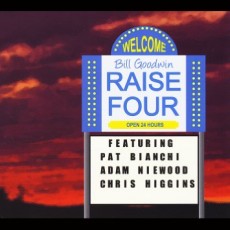
Daily Dose Of jazz…
F. Bill Goodwin was born in Los Angeles, California on January 8, 1942. He is the son of announcer and actor Bill Goodwin of the Burns and Allen radio and television programs.His professional drumming career began in 1959 and has worked with Bil Evans, Dexter Gordon, Art Pepper, Jim Hall, George Shearing, Bobby Hutcherson, June Christy, Joe Williams, Tony Bennett,, Mose Allison, and the Manhattan Transfer among others.
He joined vibraphonist Gary Burton when he brought him to the East Coast in 1969. After a three year stint with Burton’s group, Bill settled in the Poconos and worked the local hotels and resorts. It was there that he and bassist Steve Gilmore met. They are both charter members of the Phil Woods Quintet, joining at the quartets inception in 1974.
In the mid-Seventies Goodwin worked with Tom Waits on his Nighthawks at the Diner album and with Steely Dan. He has been a featured performer at the W. C. Handy Music Festival as a member of the festival’s All-Stars alongside guitarist Mundell Lowe and pianists/vocalists Johnny O’Neal and Ray Reach, vibraphonist Chuck Redd and guitarist Tom Wolfe.
Drummer Bill Goodwin won a Grammy for the Phil Woods albums More Live and At the Vanguard and has produced several albums for trumpeter Tom Harrell, Keith Jarrett, Gabor Szabo, Bill Plummer and Paul Horn. He currently teaches jazz drumming at William Paterson University while continuing to perform as the drummer for the Phil WoodsQuartet/Quintet and the Little Big Band.
More Posts: drums
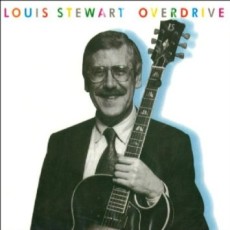
Daily Dose Of Jazz…
Louis Stewart was born January 5, 1944 in Waterford, Ireland. He began his professional career performing in Dublin showbands. In 1968 he performed at the Montreux International Jazz Festival with Irish pianist Jim Doherty and received the Outstanding European Soloist award.
He was offered and turned down a scholarship to attend Berklee Colege of Music for a job with Benny Goodman’s band in 1970. Stewart began recording as a leader in the 1976 with Louis the First. His sidemen have included Sam Jones, Billy Higgins, Peter Ind, Red Mitchell and Spike Robinson
During the late 1970s he began working with George Shearing, touring America, Brazil and major European festivals, and recording eight albums, including several in trio with bassist Niels-Henning Orsted-Pederson. Louis also appeared on albums with Joe Williams and J.J. Johnson.
As a leader his musical roots lean towards be-bop and material associated with Charlie Parker. Guitarist Louis Stewart has recorded twenty albums to date and has received an honorary doctorate from Trinity College Dublin and continues to perform, record and tour.
More Posts: guitar
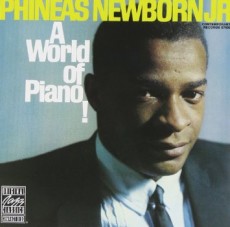
Daily Dose Of Jazz…
Phineas Newborn, Jr. was born into a musical family on December 14, 1931 in Whiteville, Tennessee. His father Phineas Sr. was a blues musician and his younger brother Calvin, a jazz guitarist. He studied piano as well as trumpet, tenor and baritone saxophone. His principal influences were Art Tatum, Oscar Peterson and Bud Powell.
Newborn first played in an R&B band led by his father on drums, his brother Calvin on guitar, bassist Tuff Green, Ben Branch and Wilie Mitchell before moving on to work with Lionel Hampton, Charles Mingus and others. From 1947 to ’51 they recorded B.B. King’s first recording, toured with Jackie Brenston, recorded Sam Phillips Roclet 88 which became the first #1 record for Chess Records.
His earliest Fifties recordings for Sun Records with blues harmonica player Big Walter Horton, We Three with drummer Roy Haynes and bassist Paul Chambers, and his debut as a solo artist with Phineas’ Rainbow for RCA Victor. By 1956, Phineas was in New York City performing in trio and quartet form with Oscar Pettiford, Kenny Clarke, George Joyner and Philly Joe Jones. He created enough interest internationally to work as a solo pianist in Stockholm and Rome towards the ned of the decade.
In 1960, the 29-year-old Newborn replaced Thelonious Monk and performed It’s Alright with Me on the ABC-TV series, Music for a Spring Night. A move to Los Angeles, California saw him recording a sequence of piano trio albums for the Contemporary label, however, some critics found his playing style rather facile. He developed emotional problems as a result an during certain periods pent time at Camarillo State Mental Hospital. He also suffered a hand injury which hindered his playing.
Newborn’s later career was intermittent due to ongoing health problems. During the mid-1960s to mid-1970s Newborn faded from view, underappreciated and under-recorded. He made a partial comeback in the late 1970s and early ‘80s, although this return apparently failed to benefit his financial situation.
Pianist Phineas Newborn, Jr. recorded twenty-three albums as a leader and another seven as a sideman before he passed away on May 26, 1989 after the discovery of a growth on his lungs. He is buried in Memphis National Cemetery. It is said that his financial and medical plight spurred the founding of the Jazz Foundation of America in 1989.
More Posts: piano
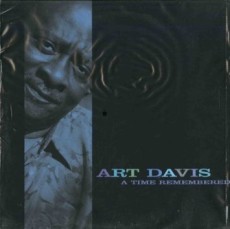
Daily Dose Of Jazz…
Art Davis was born in Harrisburg, Pennsylvania on December 5, 1934 where he began studying the piano at the age of five, switched to tuba, and finally settled on the bass while attending high school. He studied at Juilliard and the Manhattan School of Music, but graduated from Hunter College.
Davis earned a Ph.D in clinical psychology from New York University in 1982 and four years later he moved to Southern California, where he balanced his teaching as a professor at Orange Coast College and practicing of psychology with jazz performances.
Art recorded three albums as a leader with Herbie Hancock, Hilton Ruiz, Greg Bandy, John Hicks, Idris Muhammad, Pharoah Sanders, Ravi Coltrane, and Marvin Smith.
As a sideman he performed and recorded with Joe Albany, Gene Ammons, Count Basie, Art Blakey, John Coltrane, Curtis Fuller, Dizzy Gillespie, Eddie Harris, Freddie Hubbard, Elvin Jones, Etta Jones, Clifford Jordan, Roland Kirk, Abbey Lincoln, Booker Little, Lee Morgan, Tisziji Munoz, Dizzy Reece, Max Roach, Lalo Schifrin, Shirley Scott, Clark Terry, McCoy Tyner and Leo Wright.
He also launched a legal case that led to the current system of blind auditions for orchestras. Double bassist Art Davis passed away from a heart attack on July 29, 2007.
More Posts: bass
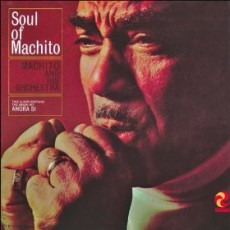
Daily Dose Of Jazz…
Machito was born Francisco Raúl Gutiérrez Grillo on December 3, 1909 in Havana, Cuba. He began playing music as a child and started playing professionally in his teens before emigrating to America in 1937 as a vocalist with La Estrella Habanera.
In the late 30s he worked with several Latin artists and orchestras, recording with bandleader Xavier Cugat. An attempt to launch a band with his brother-in-law Mario Bauzá failed, but in 1940 Machito founded the Afro-Cubans and was the front man, singer, conductor and maraca player. The following year he hired Bauzá as his music director, a working relationship that lasted for 35 years.
Under Bauzá’s influence, Machito began hiring jazz-oriented arrangers and his bands of the 40s were among the first to fuse Afro-Cuban rhythms with jazz improvisation that greatly inspired jazz giants Dizzy Gillespie and Stan Kenton. Throughout his career he played and recorded with Charlie Parker, Dizzy Gillespie, Buddy Rich, Cannonball Adderley, Herbie Mann, and Johnny Griffin, held a spot at the Palladium and recorded Decca, Mercury and Clef labels.
In 1983 he won the Grammy Award for Best Latin Recording for Machito & His Salsa Big Band ’82. In 2005, his 1957 album, “Kenya”, was added to the list of “1001 Albums You Must Hear Before You Die”. He played a huge role in the history of Latin jazz and passed away after suffering a fatal stroke on April 15, 1984 while playing on stage at Ronnie Scott’s in London. He was 74. A documentary of the great Cuban musician, Machito: A Latin Jazz Legacy was released in 1987.


